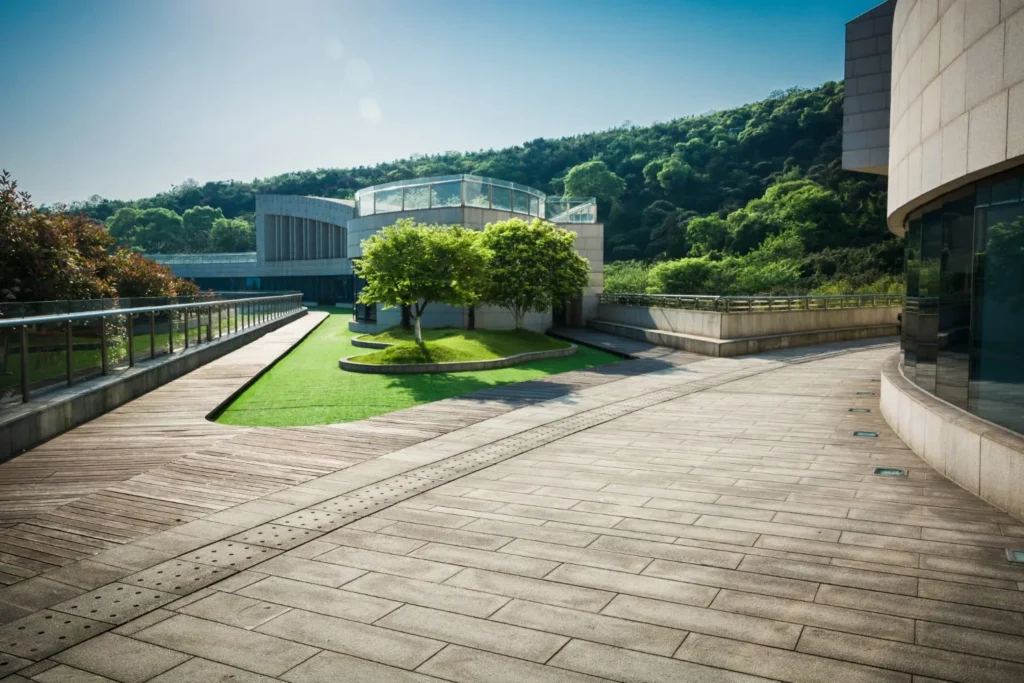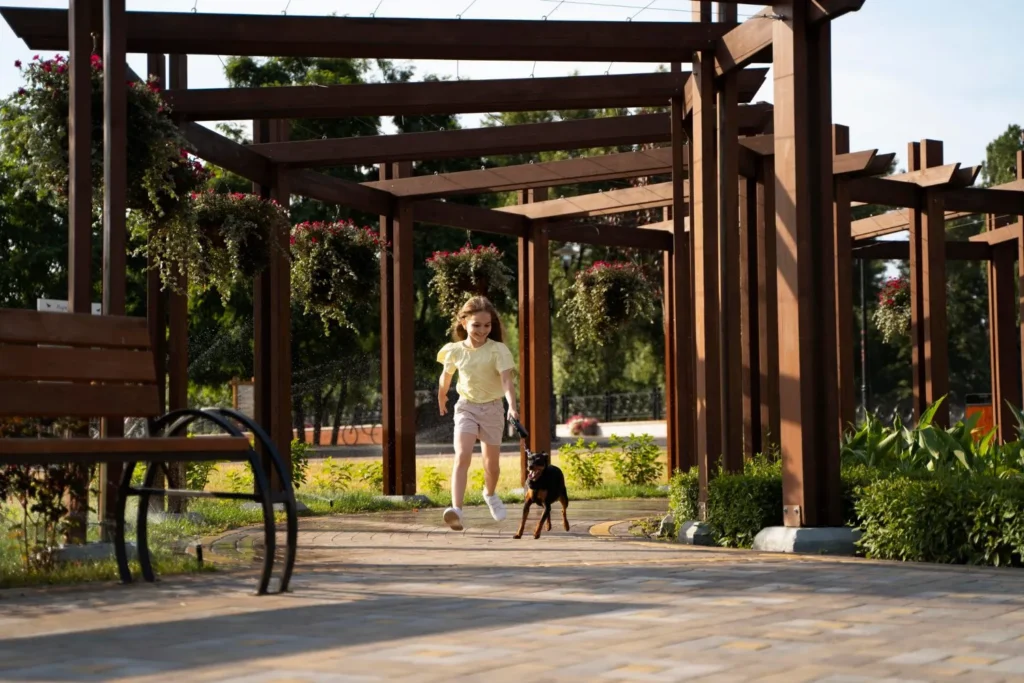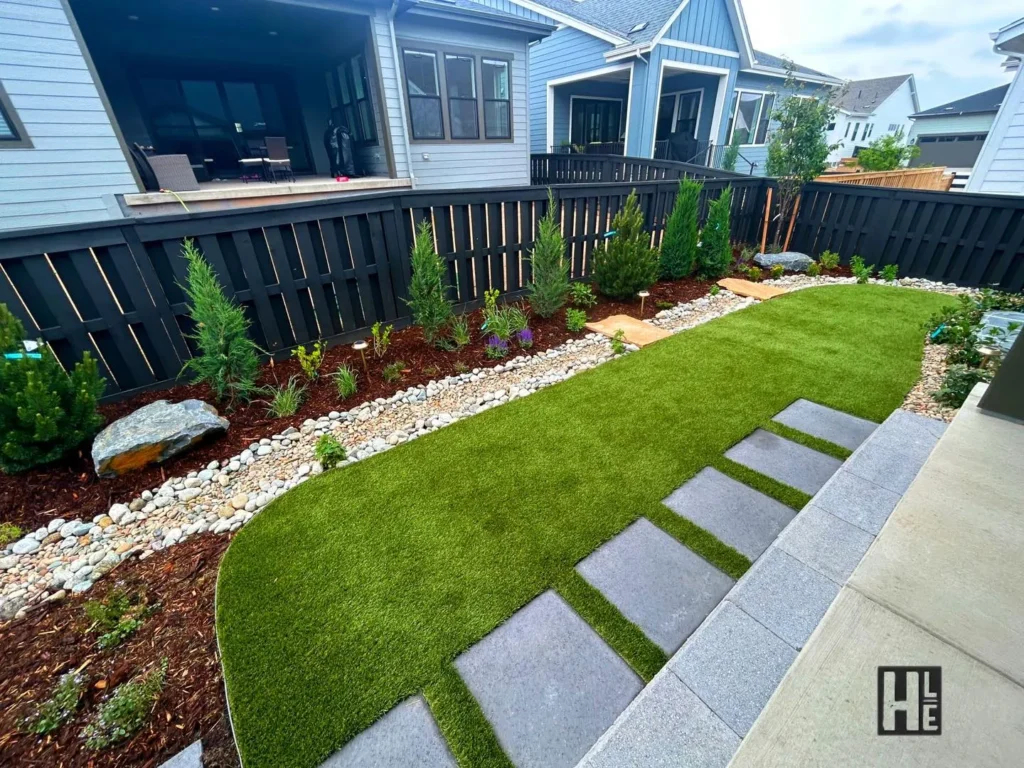Landscape Designer Ideas for Low-Maintenance Landscapes in CO
whiteseolab.com@gmail.com
September 22, 2025

To achieve a low-maintenance landscape in Colorado, focus on integrating native and drought-tolerant plants, which thrive in the local climate with minimal watering and care. Pair these with hardscaping elements like stone pathways and decorative boulders to reduce grass areas and decrease maintenance. Automated irrigation systems and mulching can further conserve water and control weeds, ensuring plant health. Utilizing perennial and groundcover plants will bring enduring color and texture with minimal upkeep. Emphasize sustainable practices to enhance longevity and environmental health. Explore these strategies to discover a harmonious blend of practicality and aesthetic appeal in your landscape.
Key Takeaways
- Choose native and drought-tolerant plants to reduce water use and maintenance needs in Colorado’s arid climate.
- Incorporate hardscaping elements like stone pathways and retaining walls for low-maintenance and durable landscape features.
- Use automated irrigation systems with smart controllers to optimize water efficiency and minimize manual watering tasks.
- Implement mulch to control weeds and retain soil moisture, reducing the need for frequent landscape upkeep.
- Design with perennials and groundcovers for vibrant, low-maintenance, and biodiversity-supporting landscapes year-round.
1. Choose Native Plants
Selecting native plants is a fundamental strategy for creating a low-maintenance landscape. In Colorado, utilizing local plant varieties offers numerous native plant benefits, such as reduced maintenance requirements and enhanced soil compatibility. These plants are well-adapted to the region’s climate, thereby minimizing the need for excessive watering and fertilization. Furthermore, native plants contribute to design aesthetics by seamlessly blending into the natural environment and offering seasonal color schemes that enhance visual appeal throughout the year. They also play an essential role in wildlife attraction, providing habitat and nourishment for local fauna. By choosing native plants, homeowners can achieve a sustainable, visually pleasing landscape that aligns with the local ecosystem, ultimately reducing both time and resources spent on upkeep.
2. Use Hardscaping Elements
Incorporating hardscaping elements into your landscape design can considerably reduce maintenance efforts while enhancing the overall aesthetics of your outdoor space. Stone pathways provide durable walkways that require minimal upkeep, guiding visitors seamlessly through the garden. Decorative boulders add a natural, sculptural quality, serving as focal points. Outdoor seating areas, crafted from concrete or stone, offer functional and elegant spots for relaxation. Fire pits create inviting gathering spaces, extending outdoor usability into cooler Colorado evenings. Retaining walls are not only practical for managing soil erosion but also add layered visual interest. Gravel beds are a simple yet effective solution for defining zones without frequent watering. Water features, such as fountains, introduce tranquility, requiring far less care than traditional plantings.
3. Opt for Drought-tolerant Plants
Consider these factors when opting for drought-tolerant plants:
- Pest Resistance: Choose plants naturally resistant to local pests, reducing the need for chemical interventions.
- Water conservation: prioritize species that require less water, ensuring sustainable landscape management.
- Soil Adaptability: Select plants that improve soil health, promoting robust growth without excessive maintenance.
4. Install Automated Irrigation Systems
As you enhance your landscape with drought-tolerant plants, consider complementing these efforts by installing automated irrigation systems. These systems, particularly those utilizing drip irrigation, guarantee precise water delivery directly to plant roots, promoting water conservation. By integrating smart controllers, automated systems adapt to weather changes, making seasonal adjustments to optimize water use. Landscape automation not only reduces manual labor but also enhances the efficiency of water usage through efficient scheduling, providing water only when necessary. Regular system maintenance guarantees longevity and peak performance, safeguarding your investment. In Aurora, Colorado, companies like HLE Landscaping & Concrete, led by Brandon Gallegos, offer expertise in designing and installing these advanced irrigation solutions tailored to your specific landscape needs.
5. Incorporate Mulch for Weed Control
To achieve the best results, consider the following:
- Mulch Maintenance: Regularly replenish organic mulch to sustain its benefits.
- Mulch Alternatives: Explore gravel or decorative rocks for a low-maintenance, long-lasting option.
- Mulch and soil: Confirm compatibility between mulch and soil to prevent adverse effects on plant health.
6. Limit The Lawn Area
Reducing the lawn area is a strategic approach to achieving a low-maintenance landscape, particularly suitable for the arid climate of Aurora, Colorado. Homeowners can explore various lawn alternatives, such as xeriscaping, which utilizes drought-resistant plants. This not only decreases water usage but also curtails ongoing maintenance efforts. Thoughtful turf choices, like native grasses, can further simplify care while maintaining aesthetic appeal. Space optimization plays a critical role, enabling areas to be repurposed for outdoor activities or decorative features. Implementing robust maintenance strategies guarantees that landscapes remain vibrant throughout the year, accommodating seasonal considerations. By minimizing traditional lawn spaces, HLE Landscaping & Concrete, led by Brandon Gallegos, provides tailored solutions that marry functionality with visual charm, enhancing both property value and enjoyment.
7. Design with Perennials
Here are key considerations for integrating perennials:
- Color Palettes: Choose harmonious color palettes to create serene or striking garden aesthetics.
- Wildlife Attraction: Select species that support local wildlife attraction, enhancing biodiversity.
- Maintenance Tips: Regularly deadhead spent blooms and apply mulch to retain soil moisture and reduce weeds.
8. Install Low-maintenance Groundcovers
To achieve a truly low-maintenance landscape, one effective strategy is the installation of groundcover. These versatile plants offer a range of groundcover varieties that thrive in Colorado’s unique climate. Proper soil preparation is essential, ensuring robust growth and longevity. Consider installation techniques that promote healthy root systems, such as spacing for peak coverage and drainage. Choose groundcovers with diverse color combinations to enhance visual appeal across seasons. Maintenance tips include routine checks for invasive species and seasonal changes and adjustments. Additionally, groundcovers provide wildlife benefits by offering habitat and food sources for local fauna. With thoughtful planning, groundcovers can transform landscapes into sustainable, low-maintenance environments, ideal for homeowners looking to minimize upkeep without sacrificing aesthetic quality.
9. Focus on Sustainable Design
In order to achieve these goals, consider the following:
- Sustainable Materials: Use recycled or locally sourced materials to minimize environmental impact.
- Water Conservation: Implement efficient irrigation systems and drought-resistant plants to reduce water usage.
- Ecological Balance: Design landscapes that support native flora and fauna, promoting a thriving ecosystem.
Create A Stunning, Low-maintenance Landscape with HLE Landscaping and Concrete!
With a strong commitment to sustainable practices, HLE Landscape & Concrete offers solutions that are not only environmentally conscious but also require minimal upkeep. Serving Aurora, Colorado, under the expert guidance of owner Brandon Gallegos, the company focuses on enhancing soil health to promote robust plant growth. By incorporating seasonal colors and diverse garden textures, they create visually striking landscapes that change with the seasons. These designs also prioritize wildlife habitats, inviting local fauna into thoughtfully crafted outdoor spaces. HLE expertly balances outdoor functionality with design aesthetics, ensuring that each project is both beautiful and practical. Utilizing eco-friendly materials, they craft landscapes that are as sustainable as they are stunning, making low-maintenance landscaping a seamless, rewarding experience. Contact us today!




